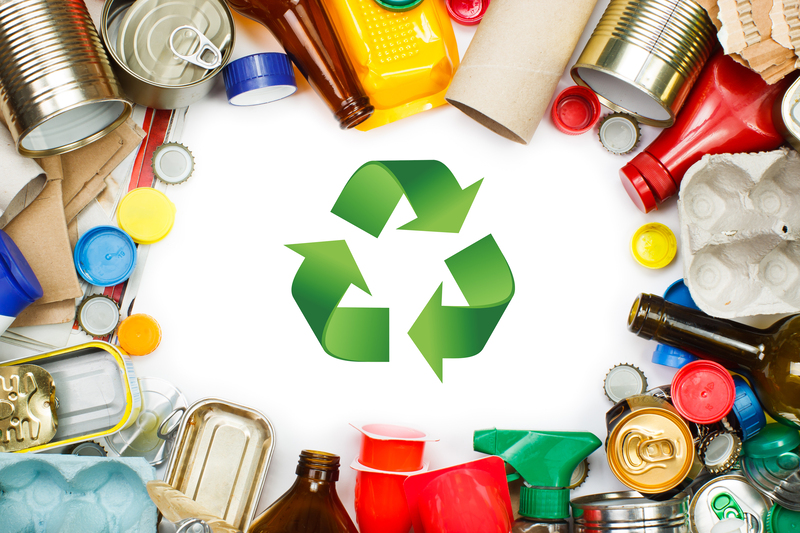Keeping PPE Waste Out of Landfills the Right Way
The rise of personal protective equipment (PPE) has been a crucial part of global healthcare and public safety, especially since the COVID-19 pandemic. However, the increased use has led to a surge in PPE waste, which threatens our environment as most of it ends up in landfills. Keeping PPE waste out of landfills the right way is no longer just an option--it's a responsibility. Are you curious about how to handle PPE waste properly, reduce pollution, and promote sustainability? Read on to discover the best strategies for effective PPE waste management and eco-friendly disposal.
Understanding the PPE Waste Challenge
PPE includes a variety of products such as masks, gloves, gowns, face shields, and more. Millions of pieces of PPE are discarded daily across the world. Most of these items are made from plastics that take hundreds of years to biodegrade, and improper disposal can have long-term environmental effects. Addressing the growing mountain of PPE waste is essential for protecting our land, water, and wildlife.
Why Is PPE Waste Ending Up in Landfills?
- Lack of Awareness: Many individuals and organizations are unsure how to dispose of PPE correctly and end up tossing it with general waste.
- Paucity of Infrastructure: Some communities lack the facilities to recycle or process PPE waste responsibly.
- Contamination Risk: Used PPE is often treated as hazardous, discouraging recycling and leading to incineration or landfill disposal.
- Single-Use Culture: Most PPE is designed for single use and is not made to be recycled in existing systems.

Consequences of PPE Waste in Landfills
PPE landfill waste poses several risks and problems:
- Microplastic Pollution: As PPE items degrade, they break down into microplastics that contaminate soil and water sources.
- Wildlife Harm: Discarded gloves and masks can entangle animals or be ingested, often fatally.
- Public Health Hazard: Improper disposal can spread pathogens and create breeding grounds for disease.
- Greenhouse Gas Emissions: Decomposition of PPE in landfills emits methane, a potent greenhouse gas.
Eco-Friendly Strategies to Keep PPE Waste Out of Landfills
Fortunately, several responsible PPE waste management strategies are emerging worldwide. These methods focus on reducing landfill burden, improving sustainability, and protecting both people and the planet.
1. Reduction at the Source
- Opt for Reusable PPE Where Possible: Industries and individuals can choose washable, reusable masks and gowns, especially in non-medical settings.
- Proper Inventory Management: Hospitals and workplaces can forecast PPE needs more accurately, reducing surplus and wastage.
- Encourage Responsible Usage: Training on when and how to use PPE can minimize unnecessary disposal.
2. Reuse and Repurposing of PPE
- Innovative Upcycling: Some organizations collect clean and uncontaminated PPE (like face shields) and repurpose them into materials for manufacturing or construction.
- DIY Projects: Creative individuals have turned single-use PPE plastics into artwork, insulation material, and even furniture.
3. PPE Waste Recycling Programs
Recycling offers the most scalable solution for keeping PPE out of landfills, but it poses challenges due to potential contamination.
- Specialized Recycling Bins: Healthcare facilities and businesses can partner with recycling companies that provide separated bins for PPE collection.
- Advanced Sorting and Decontamination: New technologies are making it safer and easier to disinfect and process PPE for recycling.
Example: Major cities and hospitals have piloted PPE recycling initiatives that turn single-use masks and gloves into plastic pellets, which are then used to make park benches, road surfaces, and household items.
4. Take-Back Schemes and Manufacturer Responsibility
- Extended Producer Responsibility (EPR): Governments are encouraging PPE manufacturers to set up take-back programs, collecting used products and ensuring they are recycled or disposed of safely.
- Retailer Drop-Off Points: Supermarkets and pharmacies can provide collection boxes for the public to return used PPE for responsible disposal.
5. Safe Incineration with Energy Recovery
When recycling isn't possible, controlled incineration of PPE under strict environmental guidelines can be a better alternative to landfill. The energy generated from burning PPE can be harnessed to power facilities, reducing reliance on fossil fuels.
- Medical Waste-to-Energy Plants: Modern plants filter emissions and use high-tech scrubbing to limit environmental impact.
The Role of Individuals and Communities in PPE Waste Management
How You Can Help Keep PPE Waste out of Landfills
- Separate PPE Waste: Always dispose of used PPE in designated bins, not with general recyclables or compostables.
- Check Local Guidelines: Your municipality may offer special PPE recycling programs or take-back events.
- Avoid Littering: Never throw masks, gloves, or other PPE in public spaces, parks, or waterways.
- Promote Awareness: Educate friends, family, and coworkers about the environmental impact of improper PPE disposal.
Community Solutions for PPE Disposal
- Neighborhood Collection Drives: Organize local events to collect used PPE and deliver it to recycling centers.
- Workplace Initiatives: Businesses can set up PPE waste stations and collaborate with certified recyclers.
- Partner with Schools: Schools can include PPE waste management in environmental education and encourage proper disposal habits among students.
Regulations and Industry Standards for PPE Waste
Governments and international organizations are developing legislation and standards around PPE waste disposal and recycling. Being aware of these helps facilities and companies stay compliant while reducing their environmental impact.
- Occupational Safety and Health Administration (OSHA): Guidelines for the disposal of PPE in workplace settings.
- World Health Organization (WHO): Recommendations for handling and disposing of medical and non-medical PPE.
- Environmental Protection Agency (EPA): Standards for medical waste incineration and landfill management.
Adhering to such regulations helps keep PPE out of landfills and diverts waste to safer, more sustainable options.
Innovations in Sustainable PPE Waste Solutions
Advancements in science and engineering are driving the future of sustainable PPE disposal:
- Biodegradable PPE: Manufacturers are creating masks, gloves, and gowns from plant-based materials that break down naturally--eliminating the landfill problem entirely.
- Chemical Recycling: Innovative chemical processes can break PPE plastics into raw materials for new products without burning or landfilling.
- Mechanical Recycling Advances: Modern sorting systems can identify, sterilize, and reprocess different PPE materials into safe, reusable polymers.
- PPE Composting: Experimental projects are investigating the safe composting of certain types of organic PPE.
Best Practices for PPE Waste Handling
For Individuals
- Only use PPE when necessary, and opt for reusable versions when safe.
- Place used PPE in sealed bags if possible before disposing of them in designated bins.
- Look for local recycling or take-back programs and support them.
- Participate in community clean-ups to remove PPE litter from the environment.
For Businesses and Organizations
- Provide adequate PPE waste stations and training for staff.
- Partner with PPE recycling companies or waste-to-energy facilities.
- Track PPE inventory to minimize unnecessary use and waste.
- Promote sustainable purchasing policies (favoring biodegradable or recyclable PPE).
Case Studies: Successful PPE Waste Diversion
City of Toronto Mask Recycling Initiative
The City of Toronto partnered with a local recycling firm to collect single-use masks and gloves from public buildings and transit hubs. Over a six-month pilot, they diverted more than 2 million pieces of PPE from landfills, transforming them into composite building materials.
Hospital Chains in India - PPE-to-Pavement Project
Indian hospitals have launched programs that recycle used PPE, mixing sterilized plastic with asphalt to build more durable, eco-friendly roads.
UK National Health Service (NHS) PPE Recycling
The NHS has implemented a nationwide scheme to repurpose clinical PPE waste. Specialized bins and advanced treatment ensure medical-grade plastics are safely processed, greatly reducing landfill reliance.

Conclusion: Every Action Counts in Reducing PPE Landfill Waste
The fundamental principle of keeping PPE waste out of landfills the right way is clear: reduce, reuse, recycle, and recover. By taking responsibility at every level--individual, community, corporate, and government--we can dramatically decrease the environmental impact of PPE.
Embrace sustainable habits, support innovative solutions, and spread awareness about correct PPE disposal. Even the smallest efforts contribute to a cleaner planet and a healthier future. Let's make our commitment to the environment visible--one mask, one glove, and one step at a time.
Frequently Asked Questions: PPE Waste & Landfills
- Is all PPE classified as hazardous waste? Not all PPE is considered hazardous, but anything used in medical or contaminated environments should be treated as such.
- Are there eco-friendly disposables? Yes! Biodegradable and compostable PPE options are increasingly available.
- Can used masks be recycled at home? Generally, no--most curbside recycling programs do not accept used PPE. Specialized programs or drop-off points are required.
Adopt the right way of keeping PPE out of landfills by staying informed and making environmentally responsible choices today!
